Table of Contents:
- What Is Texture Drawing?
- What Is Acrylic Paint?
- Creating Textures with Acrylics
- How to Draw Water
- Making Abstract Textures
- Creating Grass Textures
What Is Texture Drawing?
The seafoam on top of a wave, spikey blades of grass, silky strands of hair—these are all textures that you need to create to make a drawing or painting look authentic. The world is full of textures and as a painter, I’ve spent countless hours learning to recreate them. Now, I want to share with you some of my texture drawing techniques.
The easiest medium for me to use to show you how to add textures in painting is acrylic paint. I’ll explain why and then give you a few examples so you can see how it’s done.
Because there are so many textures you can create, this blog will be in multiple parts. In Part 1, I’ll show you how to draw water and achieve grass textures. I’ll also show you a quick way to make abstract textures.
Let’s get started!
What Is Acrylic Paint?
Acrylic paint is a fairly young medium among art materials and has gained great popularity due to its unique qualities. Acrylics can be painted using several techniques you would use with oil, such as impasto, but it dries much faster. With acrylics, you can also paint translucent glazes as you can do with watercolor paint. Besides paint, there is a large selection of acrylic texture pastes that can be used to create high-volume textured paintings.
Acrylic paints are made of two components: pigments, which are the color base of the paint, and an acrylic resin binder.
There are a variety of types of acrylic paints, each with their own unique properties:
- Acrylic paste — very thick and dense
- Acrylic heavy-bond paint — just as thick, but less than pastes
- Liquid acrylic paint — has a flowing consistency
- Acrylic mascara — highly pigmented liquid paint
- Pearlescent acrylic paint (metallic acrylic) — contains mica particles with a mixture of titanium that allows you to see the shine at certain angles
- Water-based acrylic paint — comparable to watercolor, its acrylic resin binds with gum arabic
I love Arteza acrylic paints! They are classified as heavy-body paint since they have high pigmentation. This means I use less paint and still get a good saturation of color. A big plus with these paints is that after drying, they don’t fade, but become glossy and bright like oil paint. This really distinguishes them from others.
Creating Textures with Acrylics
Using acrylic paint, you can create an infinite number of textural effects, both abstract and figurative. You can create the look of water, grass, skin, glass, fur, and more. Because they are full-bodied, you can achieve the thickness you need to create impasto flowers or abstract textures that stand off the canvas.
Below I’ve explained how to get realistic textures for water and grass as well as an abstract texture.
How to Draw Water
The first thing I do is use a photo of an ocean with some waves as a reference. You can find images online, this particular one is from Unsplash.com.
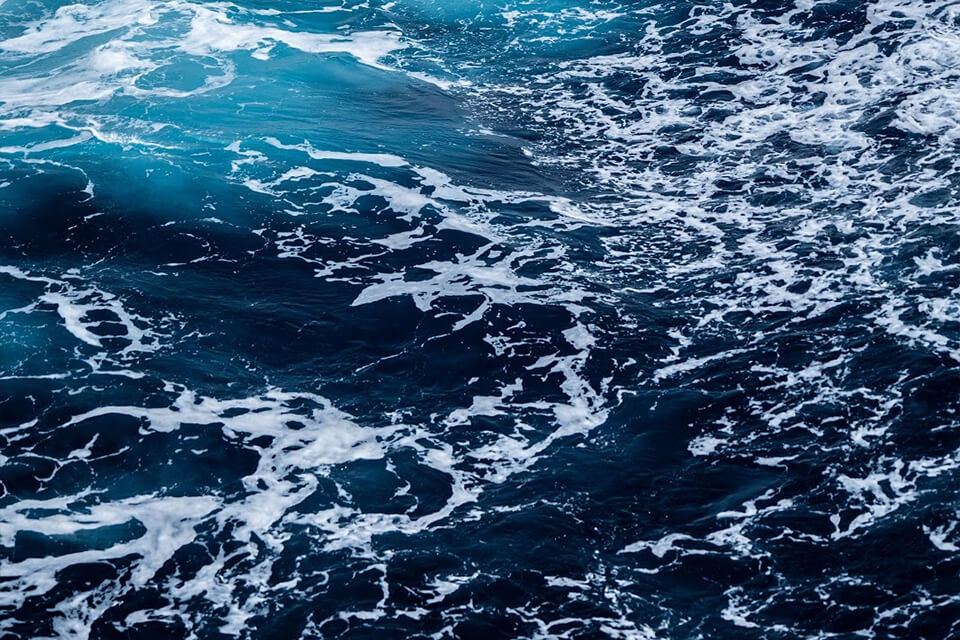
I place many shades of blue from the darkest to the lightest, in order to render the texture of the water. For this example, I started with Phthalo Blue and kept using lighter shades, ending with Sky Blue. It is a must to show the contrast, and I do this by adding black and white paint. I start by filling in the background:
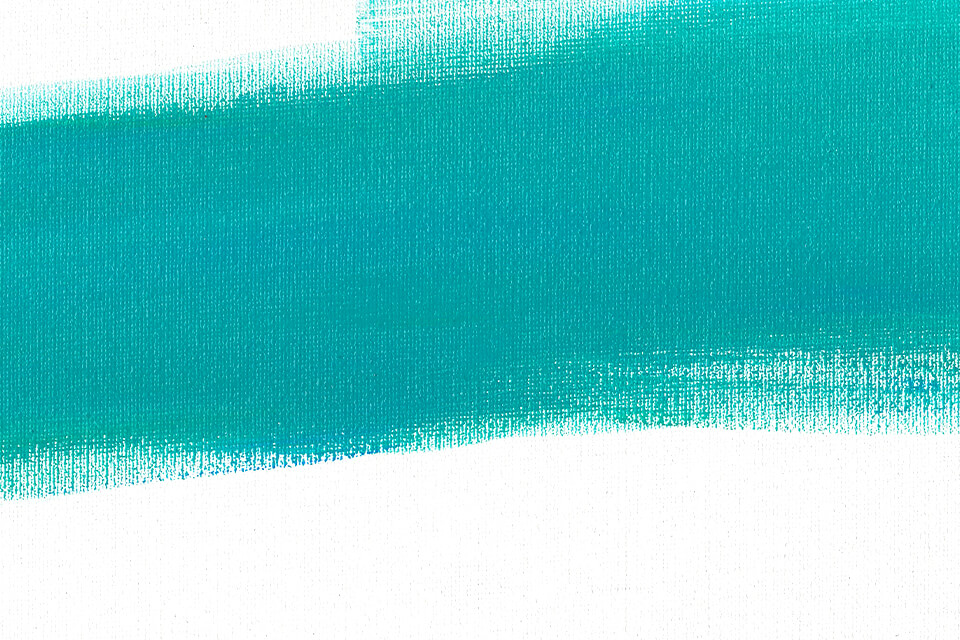
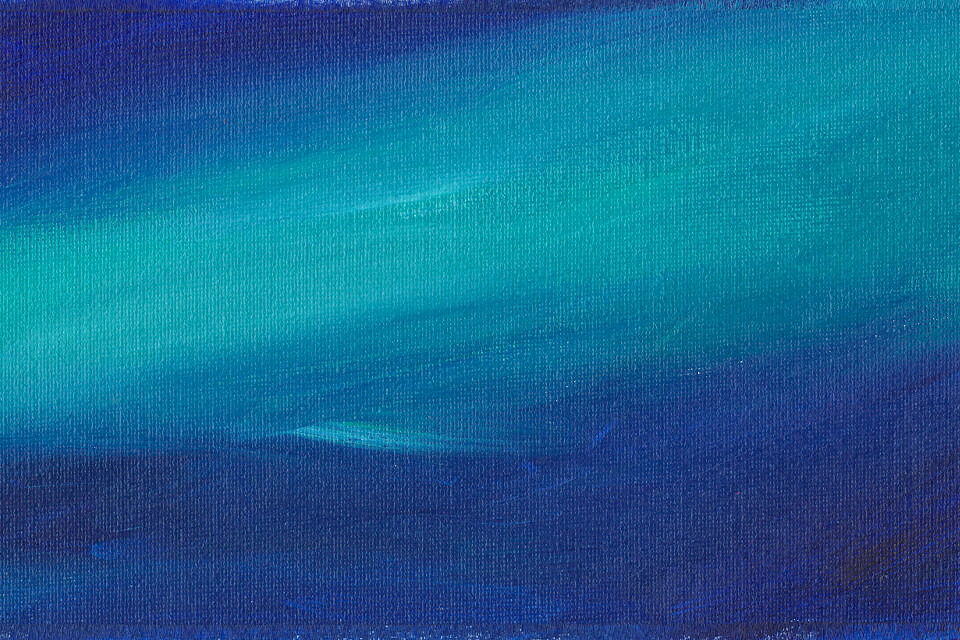
Next, I use a flat brush and mix white and turquoise with a little blue to lightly paint over the center diagonally. Then I add dark shades of blue from the bottom and top to create depth, shading the light and dark parts.
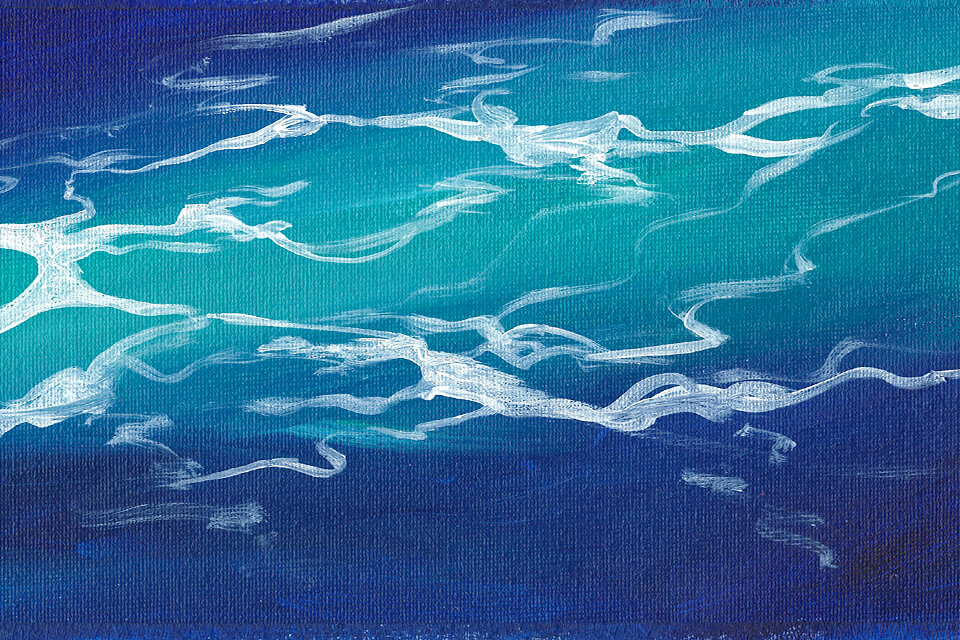
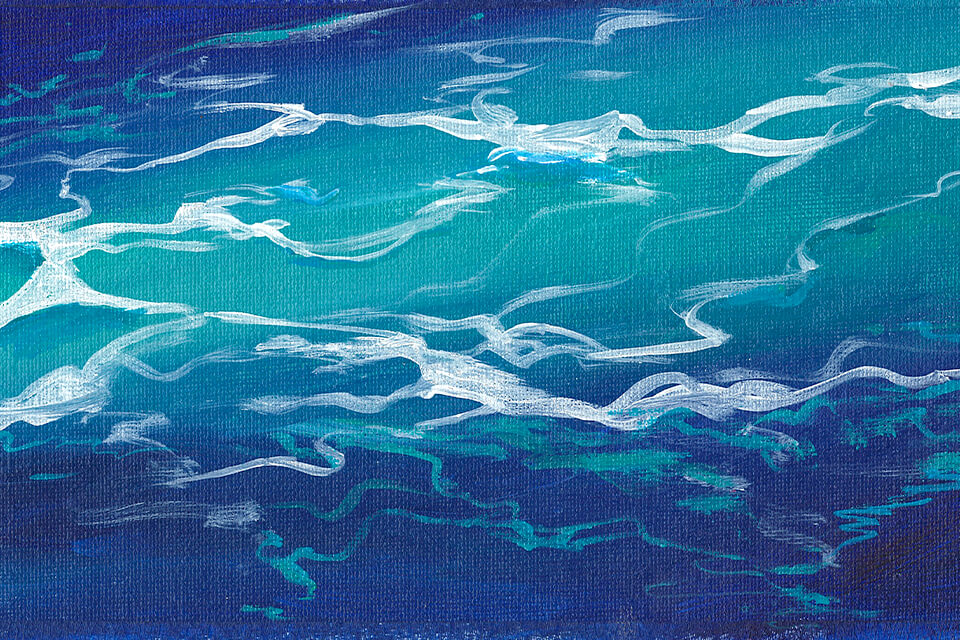
The best way to convey the effect of water is by using reflections, highlights, or foam. In this case, it’s white foam, which I draw with dashed lines of different thicknesses and lengths. I draw the white foam in the center of the light area. In the shadowed areas, I paint the foam with light blue and turquoise shades.
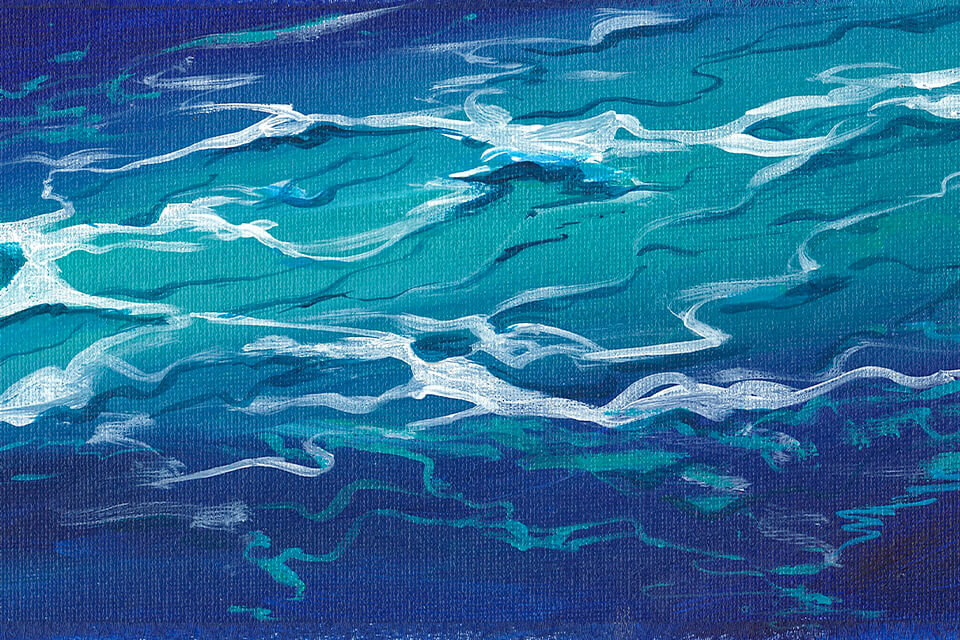
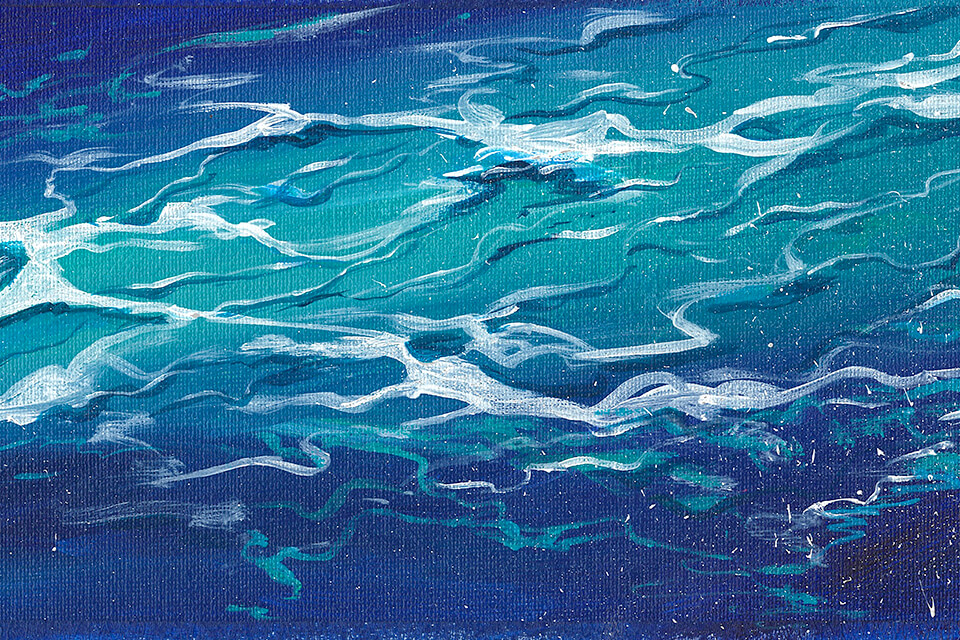
I add shadows underneath the white foam to make the texture of the water appear more realistic. Doing this will make it feel as if the foam is above the water. For depth, I add some dark lines in the light areas. The last step is to draw small white stripes in the center in the light spaces and add paint splashes using white paint in both the dark and light areas.
Making Abstract Textures
Before I show you how to create grass textures, I want to show you an overlay technique you can use for more abstract texturing. I start by painting a dense layer of acrylic and wait until it dries. To speed up this process, I often use a hairdryer!
Next, I mix different colors, dilute them heavily with water, and use that to apply a transparent layer on top of the dried first layer. Below is an example of what it looks like on the canvas. The picture on the left shows the layering done while the first layer was still damp. On the right, the wet paint was applied over the dried layer.
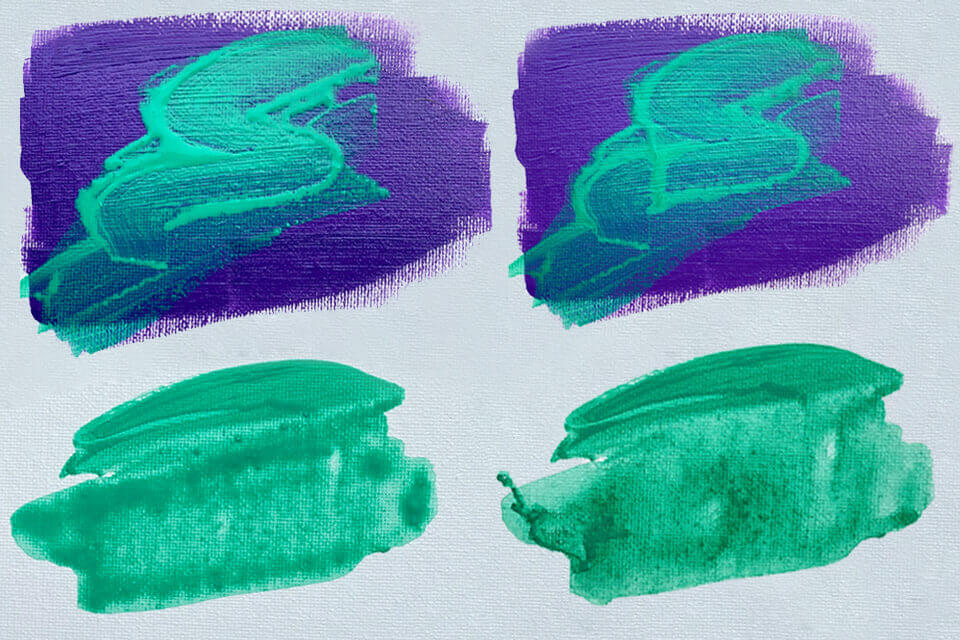
Creating Grass Textures
Once again, I used Unsplash.com to get a reference photo for making my grass textures.
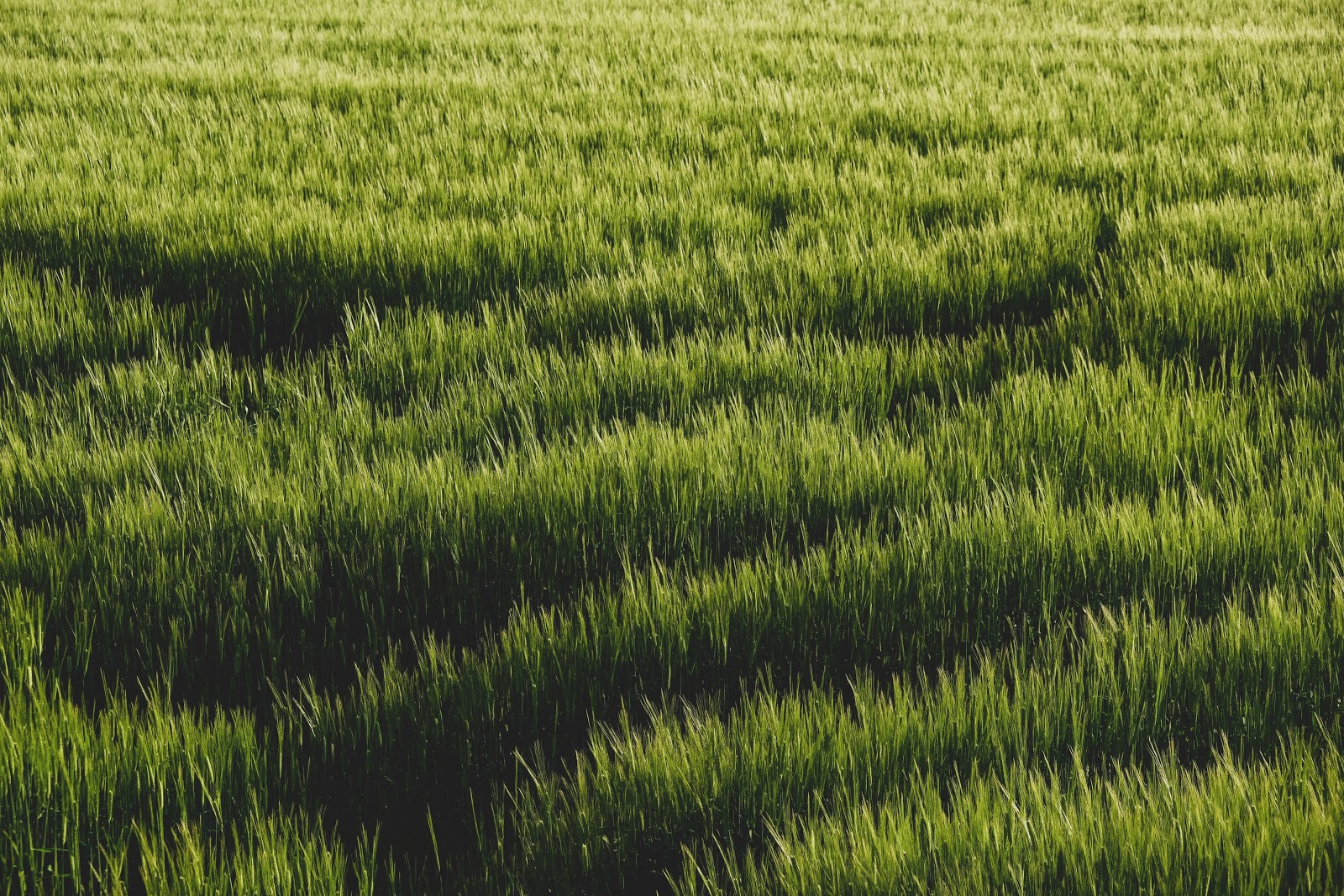
Let's take a look at the mixed technique I use for grass. This technique uses both brushes and a palette knife. The main thing here is to use many shades of green and yellow.
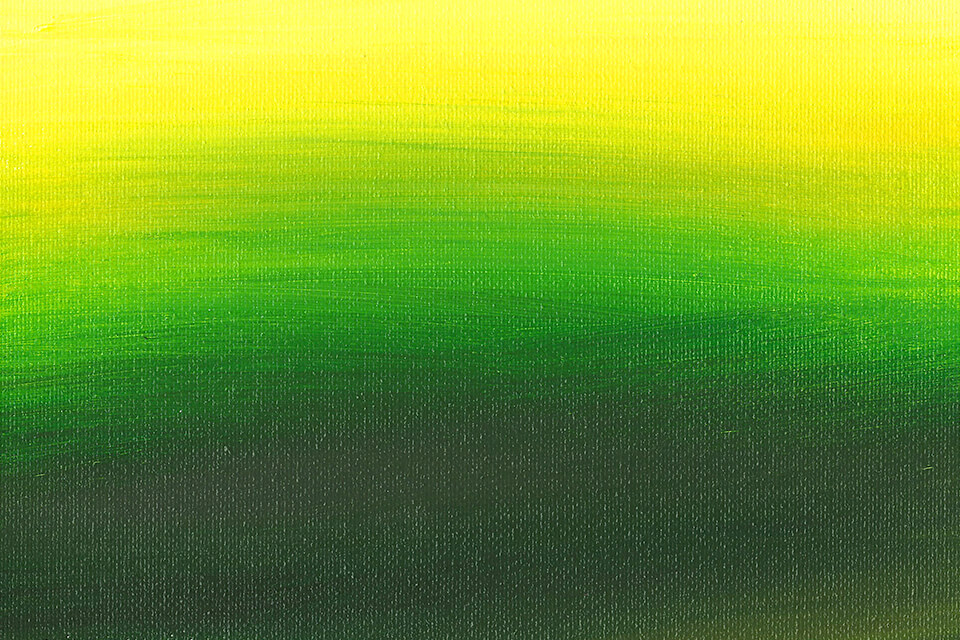
Start by filling in the background going from light yellow to dark green using a wide flat brush. The transition should not be super smooth. It’s good to use lots of different strokes.
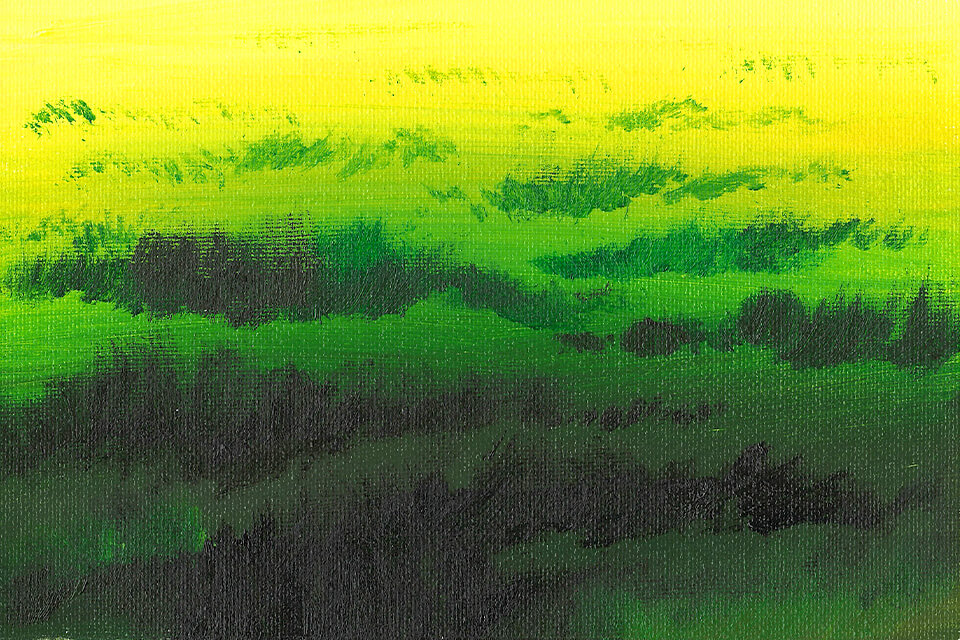
Next, I use a small bristle brush to add the darkest places in the picture. I mix dark green and black acrylic together to get the shade for this. I apply the paint using a dry brush, stroking from bottom to top to create blades of grass.
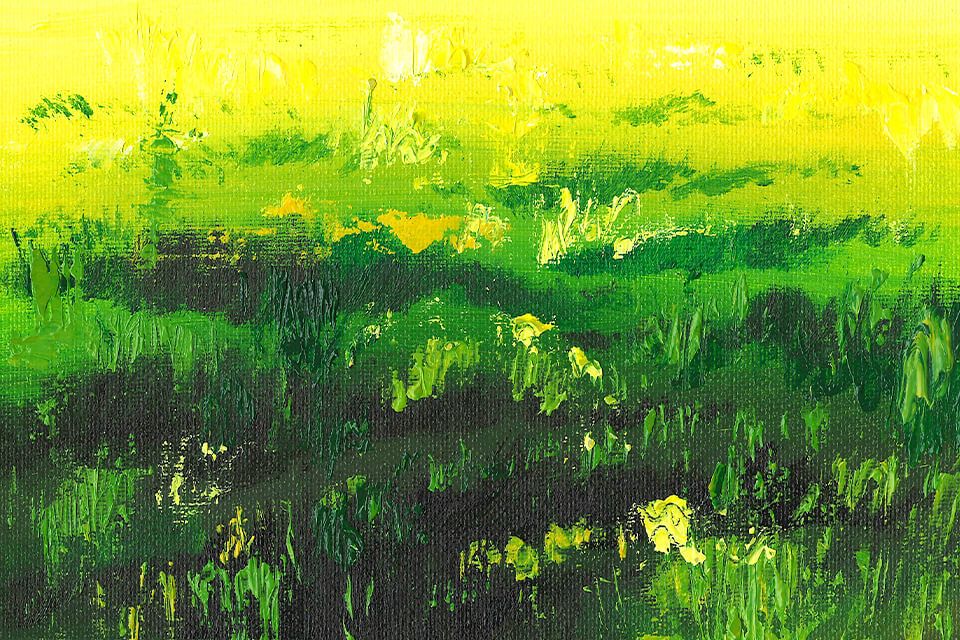
Then, using a small rectangular palette knife, I add light green in thick strokes to the foreground or the area that’s closest to us. To create the scribbles of grass I use the corner of the palette knife. The further the view is from us, the less detail there is and the lighter the color will be, so I add more of the light yellow shades there. Can you see the grass’s texture now?
The final step is to add details using a thin brush. I concentrate on the center of the picture. I start by diluting a mixture of white and yellow with water and then draw small strokes of grass. I use darker colors to draw small tufts of grass in the distance.
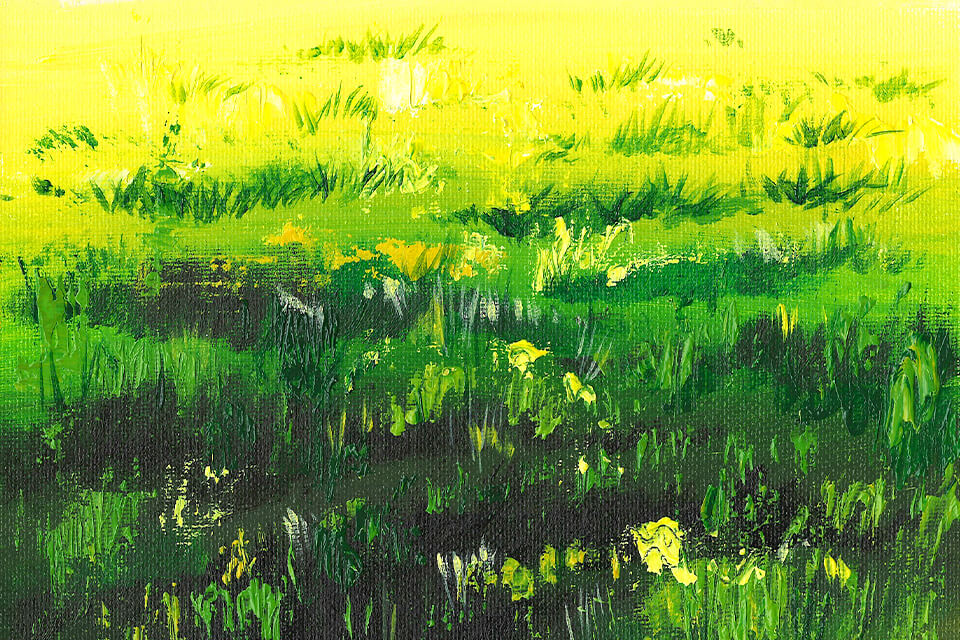
Just by looking at these textures, you can see that acrylic paint is a very flexible medium. You can create realistic textures, like water, and also paint more abstract landscapes using a palette knife and acrylic paint. In the next part of the blog, we'll look at how to mix different skin tones, add highlights on glass, create animal fur texture, use acrylic paste, and paint more abstract textures.
Until then, have fun trying these and happy painting!
















